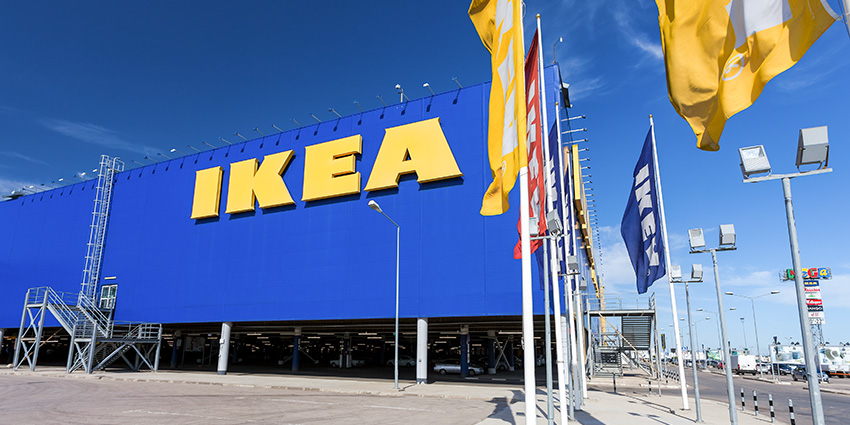“Be where your customers are” is the conventional wisdom for customer experience.
Where are those customers? On social media.
As such, brands have spread their presence across various channels, from Facebook and TikTok to Reddit and Bluesky.
However, strategies are starting to shift, according to Jim Tomanchek, VP of Partner Strategy & Development at Sprinklr. He said:
Initially, brands wanted to be everywhere their customers were, but now they’re becoming more selective and focusing on the most relevant channels valued by key customer demographics.
In doing so, businesses have recognized that different demographics use platforms distinctly.
Older generations might be on Facebook, sharing photos and updates, while younger audiences are more active on Snapchat and TikTok, engaging in very different types of conversations.
As such, social media management is evolving from just building a presence on every platform to understanding the unique dynamics of each one.
That change in approach impacts all customer-facing teams, including customer service.
Social Customer Service: A Good Approach
Technology is at the heart of social customer service, allowing businesses to capture brand mentions, prioritize them, and route them to the best-suited team.
Solutions like Sprinklr Social enable this, filtering relevant posts and – via intent and sentiment categorization – spreading them across the business.
As such, service, sales, marketing, and PR teams receive a flow of contacts to respond to, each tagged by urgency, helping brands prioritize customer engagement.
Sprinklr also helps to eliminate spam and send automated responses to specific queries, lowering the burden on employees.
Alongside spam, brands may wish to remove mentions where users just want to express their opinions; they aren’t looking for a resolution. Sprinklr Service uses AI to filter these out, too. As Tomanchek said:
The key is using AI to interpret the intent behind conversations, ensuring brands don’t just jump in awkwardly but contribute effectively.
“Our tools help brands understand this context, allowing them to respond appropriately and build genuine connections,” he concluded.
Within the system, brands can also use AI to track metrics, trending topics, and engagement, which aids reporting and automation.
As a result, the right people receive the right mentions at the right time.
Organizations that have achieved a similar unified approach to social media management are on the right track. Those who manage social in silos are lagging behind.
However, as Tomanchek referenced, the landscape is changing, and – given this – there are ways to build upon this strategy.
The Next Generation of That Approach
The approach above is advanced compared to how most customer service teams currently monitor social media. Yet, there’s still room to improve.
Here are three excellent examples of how to do so, which beckon the next generation of social customer service.
1. Social Customer Service Goes Beyond Mentions
Forward-thinking contact centers are expanding the scope of social customer service, focusing on not just who is talking about the brand but what is being discussed in broader terms.
In other words, it’s about providing actionable intelligence based on trending topics and contextual insights specific to each platform. As Tomanchek said:
Our goal is to move beyond simple brand mentions and help brands engage in conversations that matter, whether it’s about understanding the context of discussions on Reddit or recognizing trends on other platforms.
2. AI Agents Enter the Fray
Consider automated responses to brand mentions. Most brands apply a blanket approach across channels. However, as noted previously, users have different conversations across channels.
As such, expect more service teams to leverage an AI agent with a carefully crafted persona for each channel, responding in a tailored style.
Sprinklr’s AI agents are known as “Digital Twins“. Its customers can create AI twins that deliver consistent messaging across channels, but in their own tone of voice.
3. Purpose-Driven AI Routing
Many unified social media management workflows route brand mentions by tagging posts with a specific intent.
Sometimes, that intent may be unclear. Other times, there may be multiple intents in a post. That means that the routing algorithm may go awry.
Thankfully, Sprinklr has developed its proprietary AI and ML routing engines, which are constantly improving. That’s driving up accuracy, according to Tomanchek. He said:
“We’ve built purpose-driven models to understand how users talk about brands, products, competitors, and the intent behind their messages.
These models are finely tuned, leveraging social data, first-party data, and even call transcripts from contact centers,” continued Tomanchek. “This has created an industry-specific relevance engine.”
Sprinklr: Bringing Social Media, Contact Centers, & Conversational AI Together
Sprinklr is the only brand that delivers unified social media management, conversational AI, and a contact center platform.
As such, it’s uniquely placed to integrate front-office processes and customer data, helping brands deliver the omnichannel experiences of tomorrow.
“We excel in contact centers because we transform unstructured data into structured insights,” summarized Tomanchek.
Our approach is to not only resolve issues efficiently but also enhance the digital experience.
To learn more about Sprinklr’s unified approach to customer experience management, visit: www.sprinklr.com/unified-cxm/







